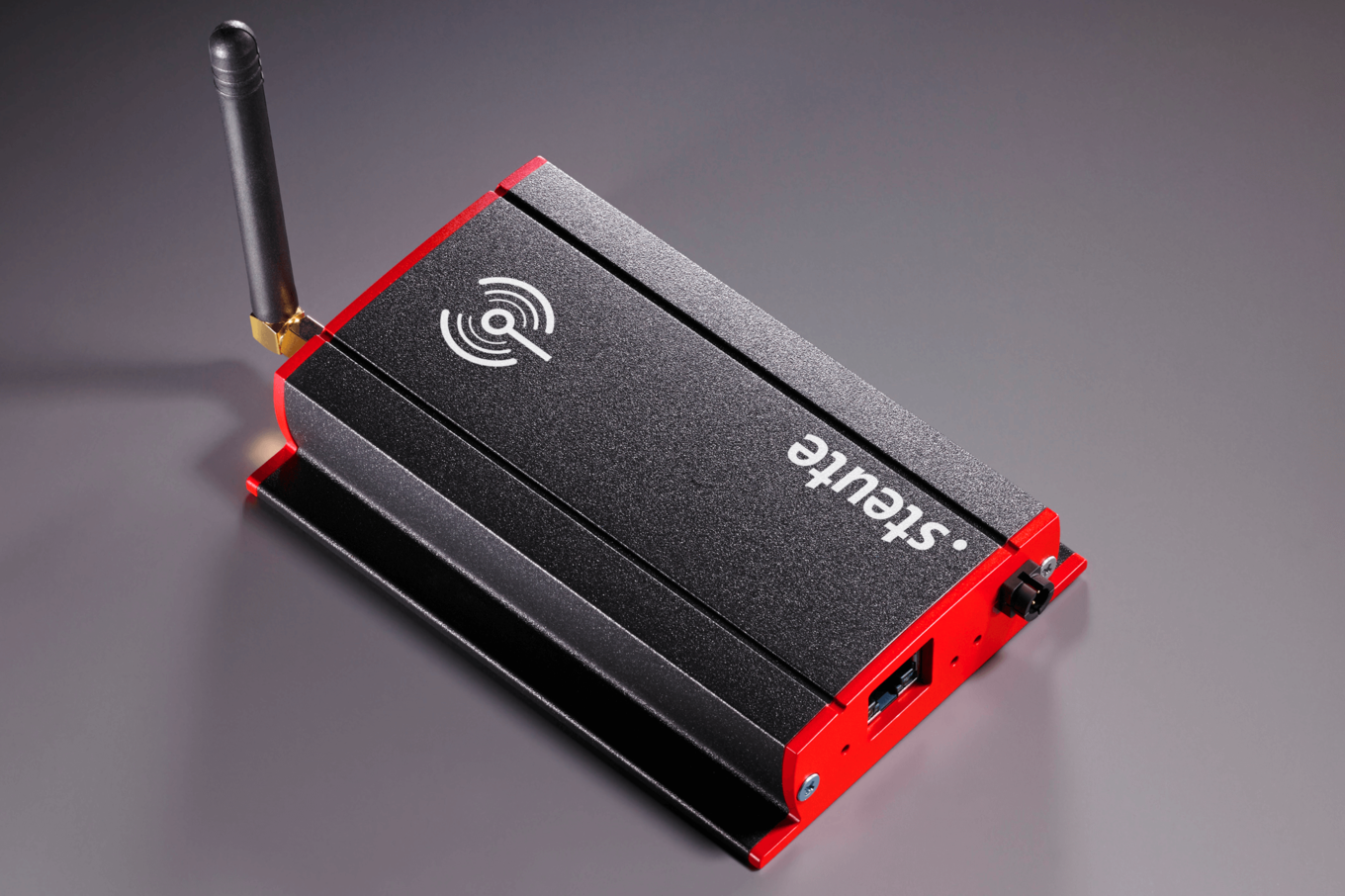The Access Points together form the underlying infrastructure of the wireless network. They are responsible for communication with the sensors, bundling all information and directing it towards the Sensor Bridge, which then in turn communicates with the application software.
The Access Points are installed throughout the transmission zone in order to guarantee reliable communication with every wireless sensor.
An Access Point is responsible for certain sensors, determined automatically by the Sensor Bridge depending on the field strength measured. When a sensor transmits a signal, it communicates with the responsible Access Points in a predetermined order. If transmission to the first Access Point should fail, the second is automatically addressed, and so on. With an increasing number of Access Points, this procedure achieves maximum transmission reliability.
Power can be supplied via an external power supply or via PoE (Power over Ethernet) using an additional module. The power consumption of an Access Point is < 2 watts. The robust and dustproof housing of the Access Points (protection class IP 20) also makes them suitable for use in rough industrial environments.


Jens Lindemeier
Sales Engineer Logistics Solutions

Hasan Aktas
Sales Engineer Logistics Solutions